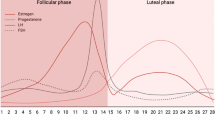Abstract.
There is evidence that high intensity resistance training promotes bone maintenance in older women, however, the effect of high intensity free weight training has not been investigated in older men or women. Furthermore, little is known about the chronic effect of weight training on serum insulin growth factor-I (IGF-I) in this population. We compared the effects of a moderate intensity seated resistance-training program with a high intensity standing free weight exercise program on bone mass and serum levels of IGF-I and IGFBP3 in healthy older men and women. Twenty-eight men (54.6 ± 3.2 years) and 26 nonestrogen-replaced women (52.8 ± 3.3 years) served as their own controls for 12 weeks, then were randomly assigned to a moderate or high intensity training group and trained three times/week for 24 weeks. Prior to and after the control period and at the end of training, bone mass and body composition were assessed by dual energy X-ray absorptiometry (DXA), muscle strength by isokinetic dynamometry, muscular power by Wingate Anaerobic Power Test, and IGF-I by radioimmunoassay (RIA). A repeated measures analysis of covariance (ANCOVA) revealed that high intensity training resulted in a gain in spine BMD in men (1.9%), P < 0.05, but not in women, whereas moderate intensity training produced no changes in either gender at this site. Increases were observed at the greater trochanter, P < 0.03, in men regardless of training intensity, but not in women at any hip site. However, when compared with zero, both men and women in the high intensity group demonstrated significant increases in trochanteric BMD (1.3% and 2.0%, respectively) and a decrease in femoral BMD (−1.8%). Neither circulating serum IGF-I nor IGFBP3 were altered by either training regimen, but both training programs resulted in improvements in total body strength (37.62%) and lean mass (males 4.1%, females 3.1%). We conclude that although resistance training of moderate to high intensity produced similar muscle changes in older adults, a higher magnitude is necessary to stimulate osteogenesis at the spine. However, at the spine, intensity was not sufficient to offset low levels of estrogen in early postmenopausal women. Furthermore, bone changes were not accompanied by changes in circulating serum levels of IGF-I or IGFBP3.
Similar content being viewed by others
Author information
Authors and Affiliations
Additional information
Received: 21 July 1999 / Accepted: 11 January 2000
Rights and permissions
About this article
Cite this article
Maddalozzo, G., Snow, C. High Intensity Resistance Training: Effects on Bone in Older Men and Women. Calcif Tissue Int 66, 399–404 (2000). https://doi.org/10.1007/s002230010081
Published:
Issue Date:
DOI: https://doi.org/10.1007/s002230010081




